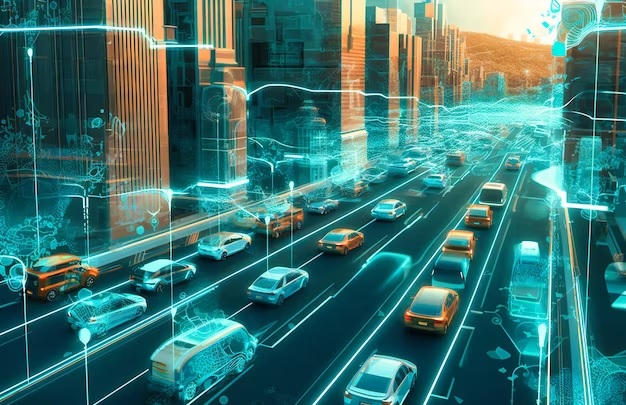In the rapidly evolving landscape of modern transportation, the integration of smart technologies has become a pivotal force in reshaping the way we travel. One of the groundbreaking advancements in this domain is the utilization of vehicle-connected data.
This paradigm shift not only enhances the efficiency of individual vehicles but also contributes to the development of smart cities and sustainable transportation systems. In this comprehensive article, we will explore the multifaceted benefits of leveraging vehicle-connected data for smart travel.
1. Understanding Vehicle Connected Data
1.1 Definition and Scope
Vehicle connected data refers to the collection, analysis, and utilization of information generated by vehicles through various sensors, onboard computers, and communication systems. This data encompasses a wide array of parameters, including but not limited to:
- Location and GPS Data: Real-time tracking of vehicles.
- Performance Metrics: Engine health, fuel efficiency, and overall vehicle diagnostics.
- Driver Behavior: Monitoring acceleration, braking, and other driving patterns.
- Environmental Conditions: Weather, road conditions, and traffic data.
1.2 Infrastructure and Connectivity
To enable the seamless flow of data, vehicles need to be equipped with advanced connectivity features.
The implementation of technologies such as Vehicle-to-Everything (V2X) communication, 5G connectivity, and Internet of Things (IoT) devices plays a crucial role in establishing a robust vehicle-connected ecosystem.
2. Enhancing Safety on the Roads
2.1 Predictive Maintenance
One of the significant advantages of vehicle-connected data is its ability to facilitate predictive maintenance. By continuously monitoring the performance of various vehicle components, predictive analytics can identify potential issues before they escalate into major problems.
This not only reduces the risk of accidents but also minimizes downtime for vehicle maintenance, resulting in a more efficient and reliable transportation network.
2.2 Real-time Traffic Management
Connected vehicles contribute to the development of intelligent traffic management systems. Through the exchange of real-time data regarding traffic conditions, road closures, and accidents, vehicles can optimize their routes, leading to reduced congestion and shorter travel times.
This not only benefits individual drivers but also contributes to a more sustainable and environmentally friendly transportation system.
3. Improving Efficiency and Sustainability
3.1 Fuel Efficiency and Emissions Reduction
Vehicle-connected data enables a deeper understanding of driving patterns and fuel consumption.
By providing drivers with real-time feedback on their driving habits, such as excessive idling or aggressive acceleration, connected vehicles empower individuals to adopt more fuel-efficient practices.
Additionally, data-driven insights can inform the development of eco-friendly driving strategies, contributing to a significant reduction in overall fuel consumption and emissions.
3.2 Smart Parking Solutions
Finding parking spaces in crowded urban areas can be a time-consuming and frustrating experience. Vehicle-connected data can be leveraged to develop smart parking solutions that guide drivers to available parking spaces in real-time.
This not only enhances the convenience for drivers but also reduces traffic congestion and air pollution caused by vehicles circling in search of parking.
4. Advancing Autonomous and Connected Vehicles
4.1 Progress Towards Autonomous Driving
The integration of vehicle-connected data is a crucial step towards achieving fully autonomous driving. Connected vehicles can communicate with each other and with infrastructure elements, such as traffic lights and road signs, to navigate complex traffic scenarios.
The continuous exchange of data enhances the decision-making capabilities of autonomous vehicles, making them safer and more reliable.
4.2 Vehicle-to-Everything (V2X) Communication
V2X communication allows vehicles to exchange information not only with each other but also with pedestrians, cyclists, and the surrounding infrastructure.
This technology enhances overall road safety by providing real-time alerts about potential hazards and enabling coordinated responses to dynamic traffic situations. V2X communication is a cornerstone in the development of smart and interconnected transportation systems.
5. Challenges and Considerations
5.1 Data Privacy and Security
As the volume of vehicle-connected data grows, concerns about data privacy and security become more pronounced. It is essential to establish robust cybersecurity measures to protect sensitive information from unauthorized access.
Additionally, clear regulations and ethical guidelines must be in place to ensure responsible and transparent handling of connected vehicle data.
5.2 Standardization and Interoperability
The effectiveness of vehicle-connected data relies on standardized protocols that enable seamless communication between diverse vehicles and infrastructure elements.
Interoperability is key to realizing the full potential of connected transportation systems, and efforts should be made to establish common standards across the automotive industry.
6. Future Prospects and Innovations
6.1 Artificial Intelligence in Transportation
The integration of artificial intelligence (AI) in transportation systems is poised to revolutionize the way we travel. AI algorithms can analyze vast amounts of vehicle-connected data to optimize traffic flow, predict maintenance needs, and enhance overall system efficiency.
The future holds the promise of AI-driven transportation systems that continuously adapt and evolve based on real-time data inputs.
6.2 Edge Computing for Real-time Decision Making
Edge computing, which involves processing data closer to the source (i.e., vehicles), is gaining prominence in the context of connected transportation.
This approach reduces latency and enables real-time decision-making, enhancing the responsiveness of connected vehicles and systems. As edge computing capabilities continue to advance, we can expect even more sophisticated applications in smart transportation.
Conclusion
In conclusion, the integration of vehicle-connected data is a transformative force in the realm of smart travel. From enhancing safety and efficiency to paving the way for autonomous driving, the benefits are vast and varied.
However, addressing challenges such as data privacy and standardization is crucial to ensuring the responsible and widespread implementation of connected transportation systems.
As we look to the future, the synergy of technology, data, and innovation holds the promise of a transportation landscape that is safer, more sustainable, and ultimately smarter.
